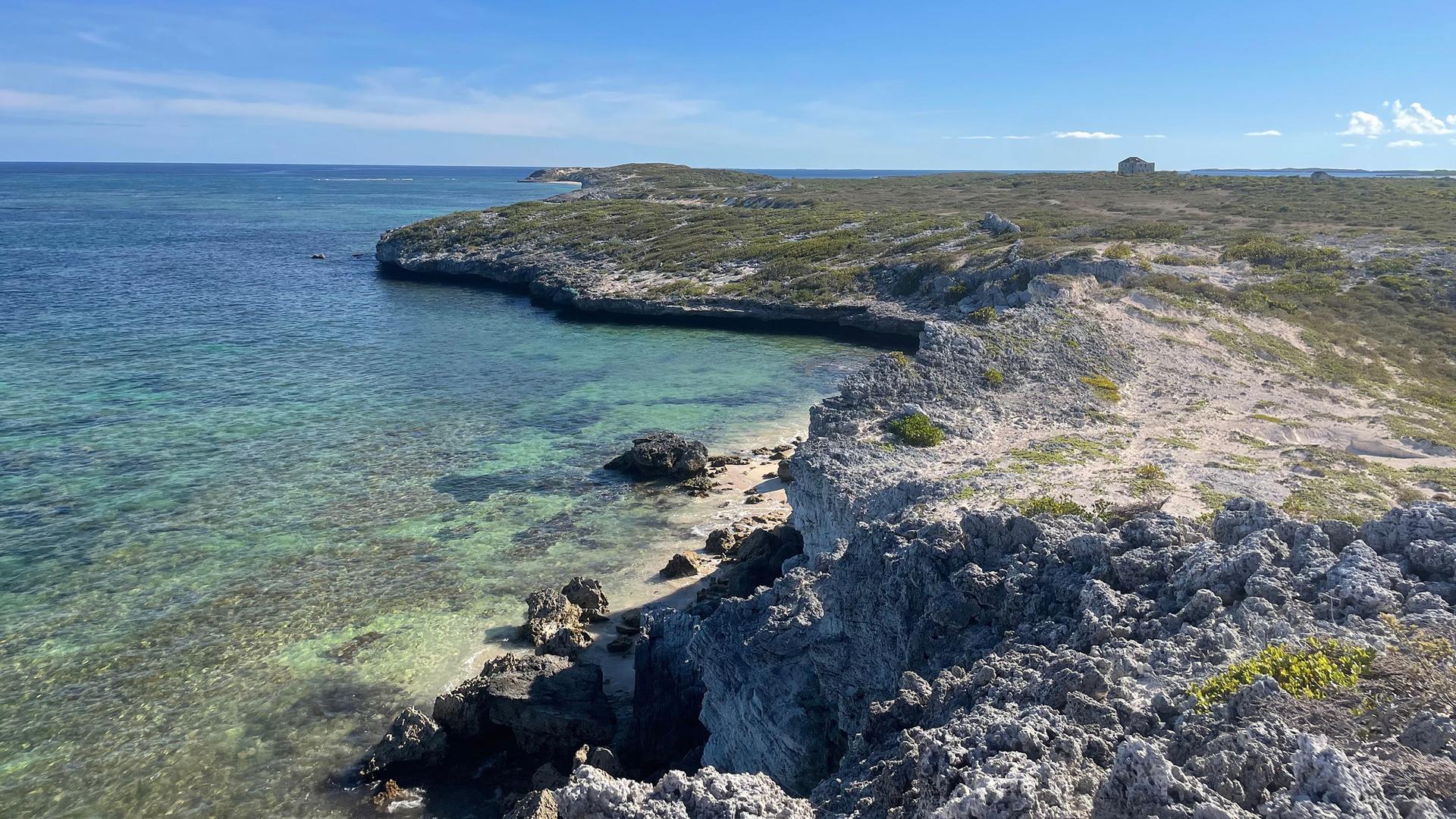Cassidy Beach was part of a research project looking at the invasive lionfish species off South Caicos Island when she decided to go on a hike one day. She’s an incoming senior, studying environmental science and oceanography at the University of Michigan.
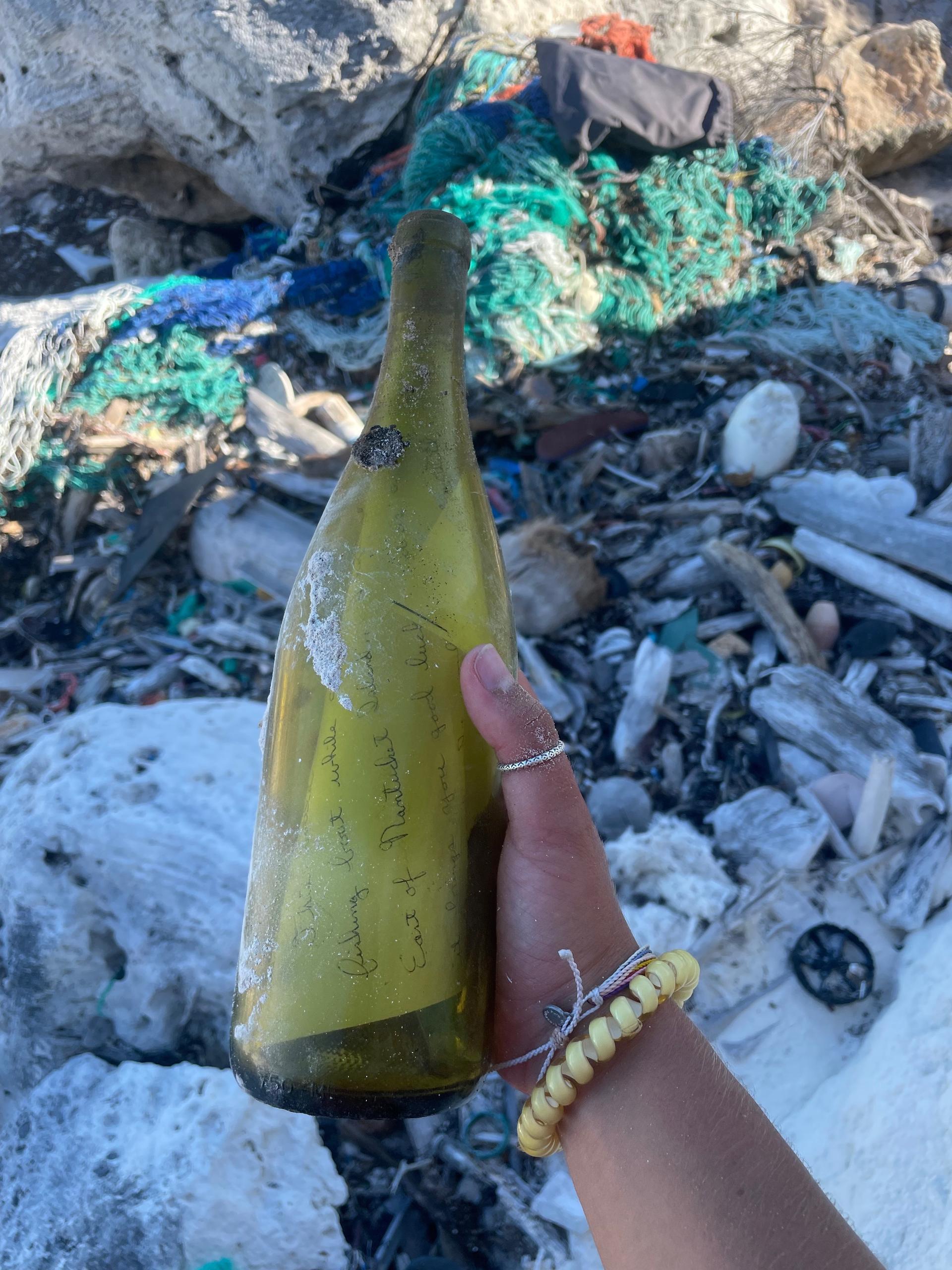
She took it back to their research center to try and crack it open. The note was from a fisherman who had thrown the bottle into the ocean about 30 miles off the coast of Nantucket, Massachusetts, asking anyone who found it to write back to him.
It turned out that the bottle that Beach found was one of hundreds that Pennel Ames threw into the Great South Channel, mostly between 2000 and 2006, when he was an offshore commercial fisherman. Those bottles are still being found to this day around the world, and so far, he’s heard back from around 80 people.
The bottles don’t, however, travel below the equator. That’s because they’re moved by ocean currents that follow a clockwise, circular path around the North Atlantic Ocean.
“It’s almost like they catch rides. They catch rides on currents,” said Sharon Ames, Pennel Ames’s wife.
It’s also why they don’t travel in a straight line, like taking a direct flight on a plane.
“People think that our bottles start on the East Coast of the United States and just shoot across to Europe,” she said. “They don’t. They have to follow [the] currents, and they go up with that Gulf Stream.”
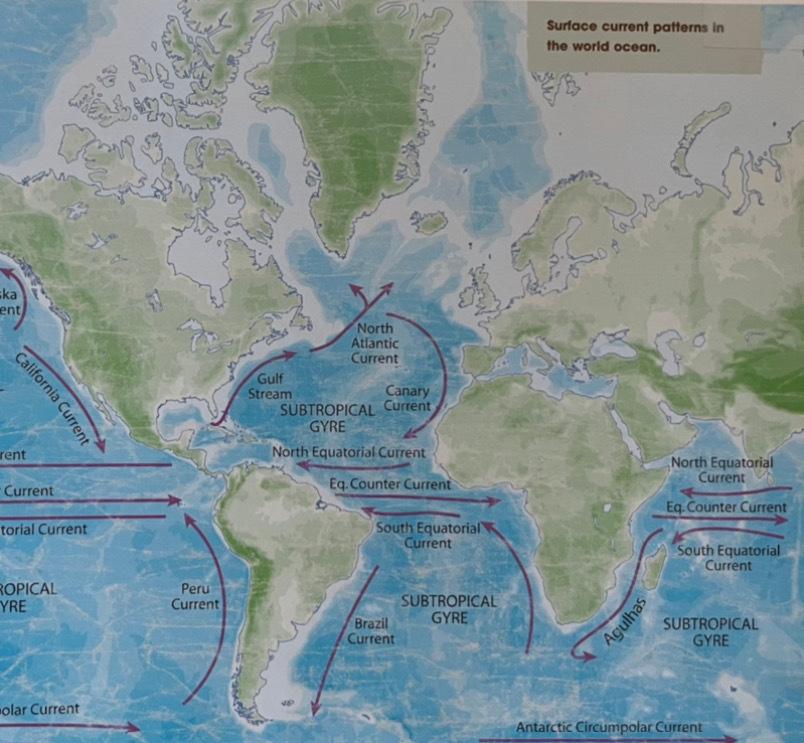
The Ameses got help from their two daughters, and for the first response they got back, the bottle had only made it as far as New Jersey.
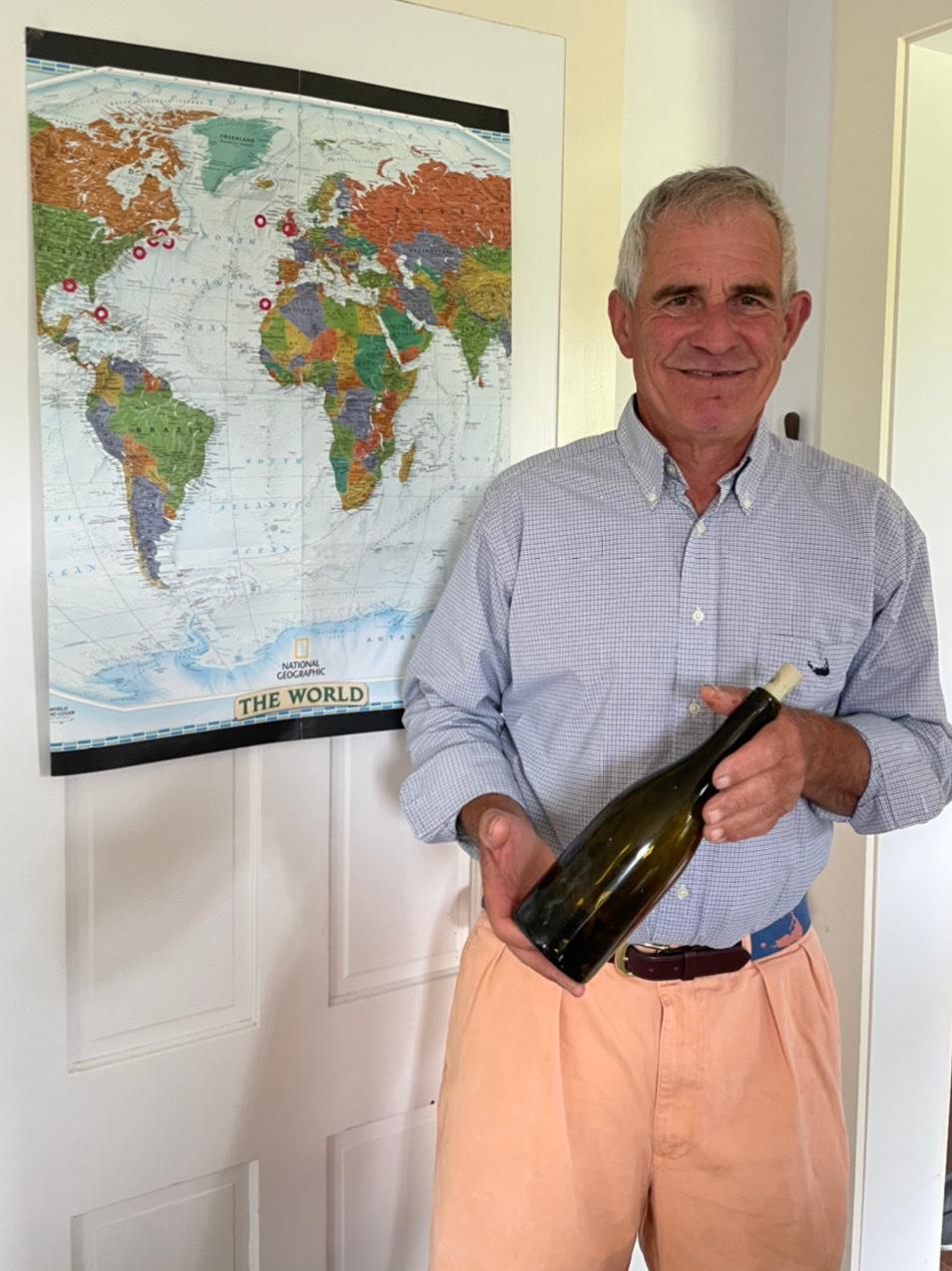
“Almost all the replies I’ve gotten [since then], the note has been in very good shape, you know, 17 or 18 years later,” Pennel Ames said.
The darker bottles also preserved the ink on the notes better if the print was outward facing.
Traveling around the world
Once the bottles were clean and airtight, they stayed afloat and traveled farther.
The first sign that the bottles were actually going somewhere was when the Ameses got a response from Canada. They then started showing up in Ireland, Scotland, England, France, Spain, Portugal — even the Canary Islands, the Azores and the Caribbean.
Yuleisy Durán Díaz found a bottle in Cuba while fishing out at sea with her then-husband.
“I didn’t understand the language, so a friend of mine helped me” to translate it, she said.
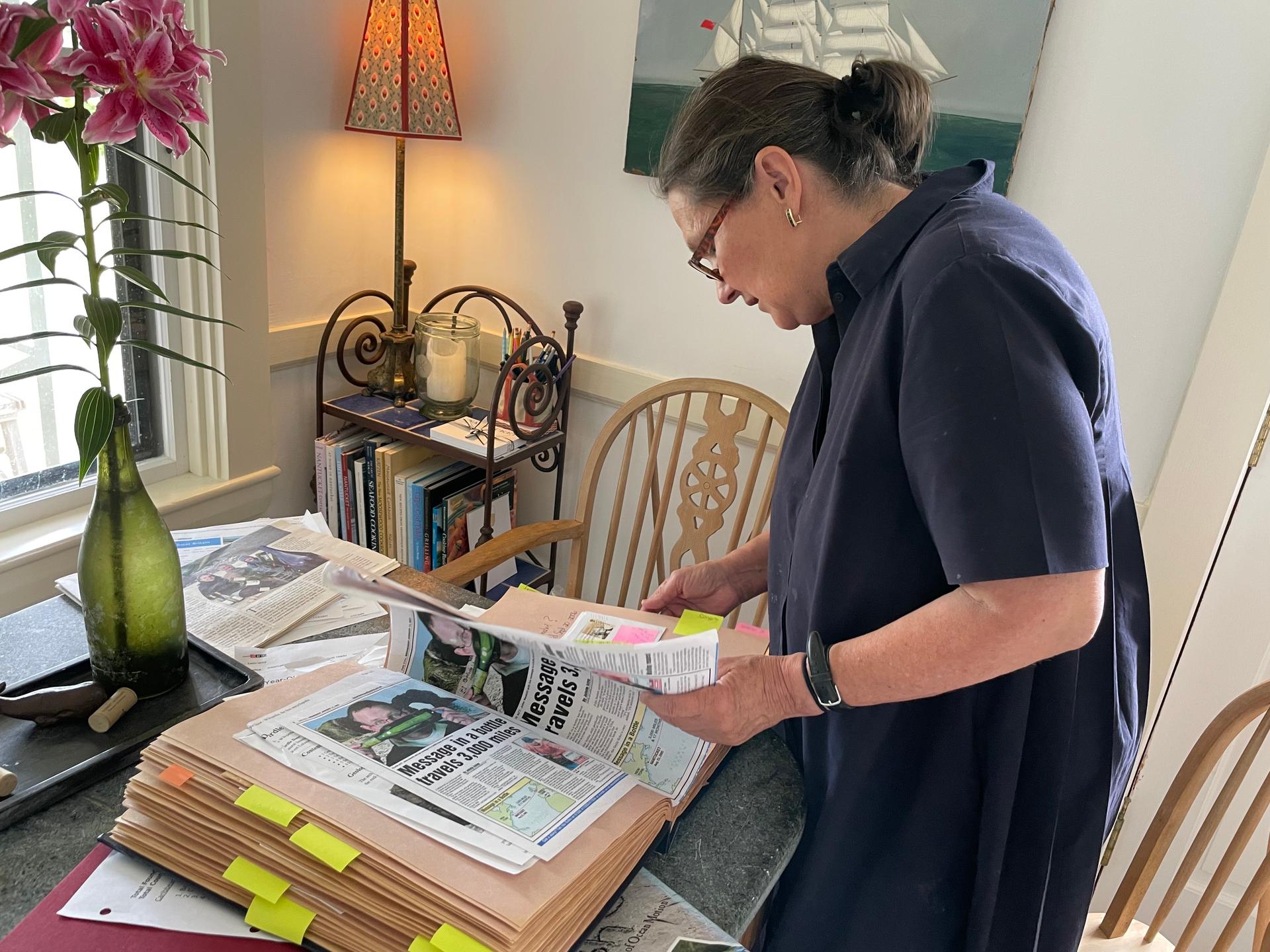
Sharon Ames said that after they received a few responses in Spanish, like the one Durán Díaz sent them, they started printing some of the letters in both English and Spanish, and even some in Portuguese.
She added that it’s always exciting getting letters back from people.
“All of a sudden you get an envelope and you go, ‘Oh, wow, I don’t know that person. That’s a bottle letter.’”
“You get your mail and you kind of know your bills and the familiar people who send stuff to you,” she explained. “But then, all of a sudden, you get an envelope and you go, ‘Oh, wow, I don’t know that person. That’s a bottle letter.’”
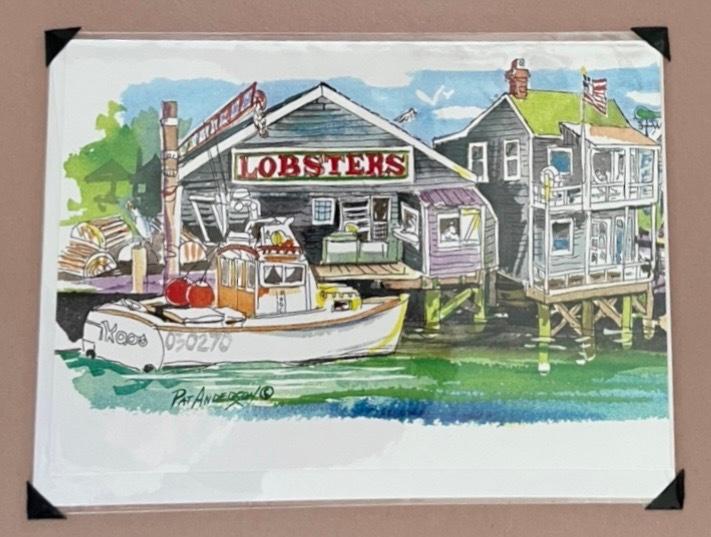
She’s collected all the responses into scrapbooks that have come from all kinds of people. A 9-year-old girl from Florida wrote back. An 87-year-old man from Canada found one while vacationing with his wife in the Bahamas.
“One man in France found it,” Sharon Ames said. “His son then found one of our bottles years later.”
All of the Ameses’ scrapbooks are filled with photos of people with the bottles they found, postcards from their vacations, printed-out emails and handwritten letters.
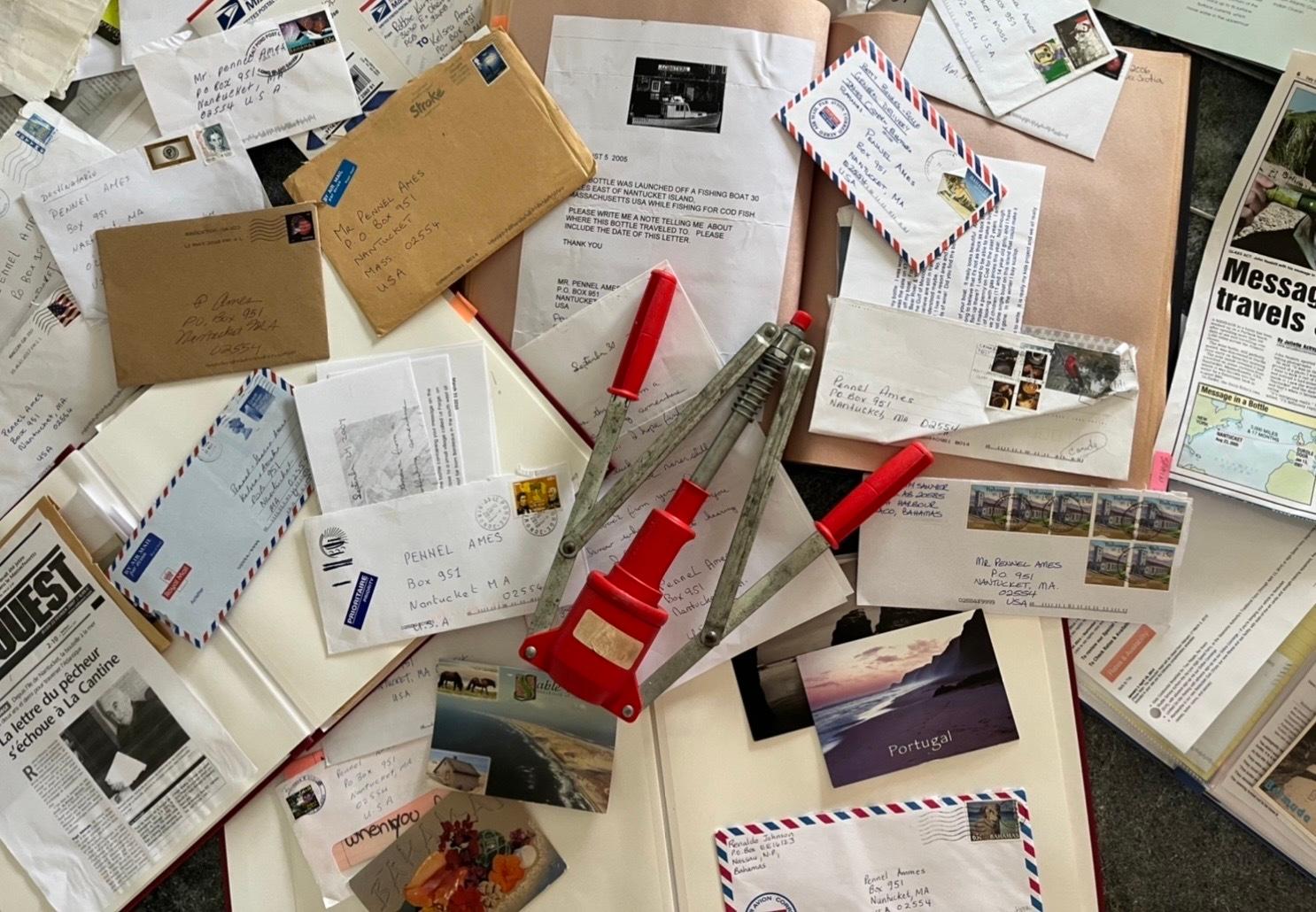
Meeting in-person
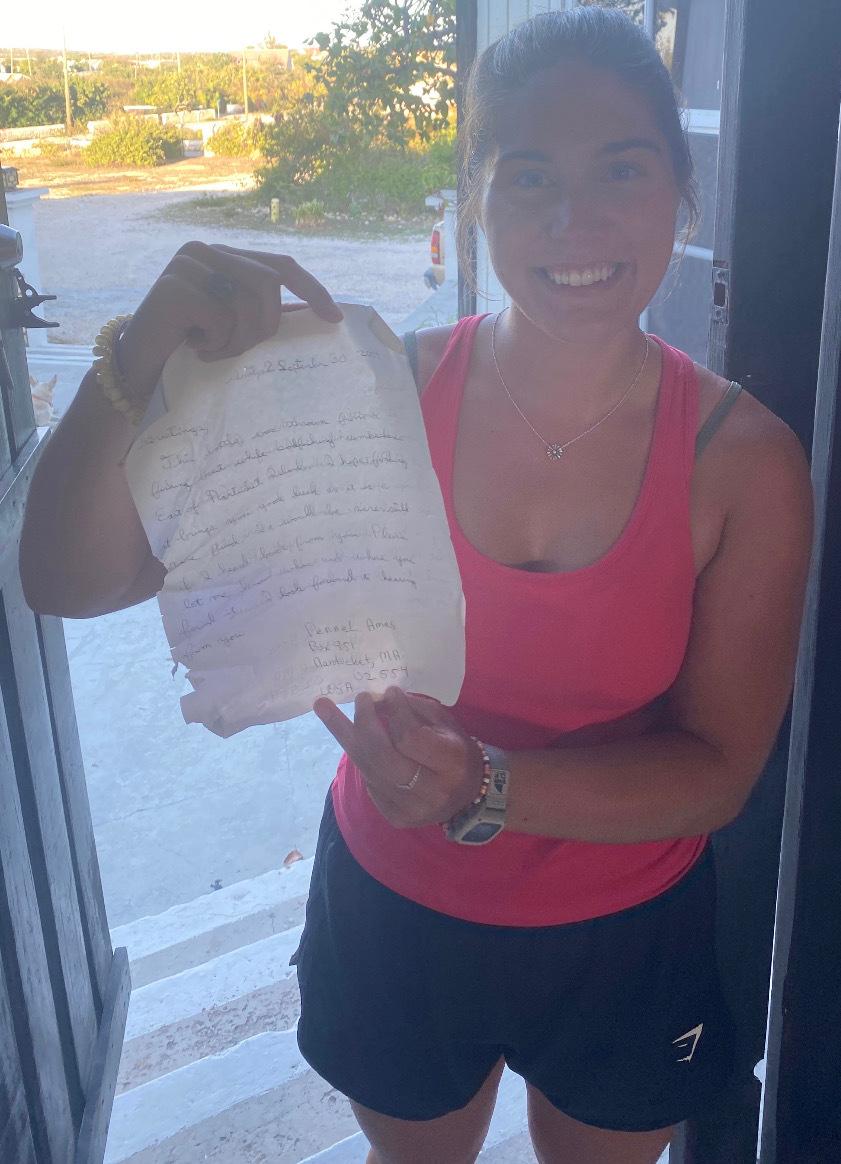
It was going to take her to Woods Hole, Massachusetts, not far from where they live.
So, they all arranged for her to meet them at their home in Nantucket.
“As soon as I walked in the cottage, they had a whole dining room table full of letters and books,” Beach said. “They had one book dedicated to France alone. And it was just really cool.”
She’s now back home in Michigan. And the letter from Pennel Ames is framed on her bedroom wall.
Related: Galapagos discovery offers clues to climate impact on deep-sea corals
